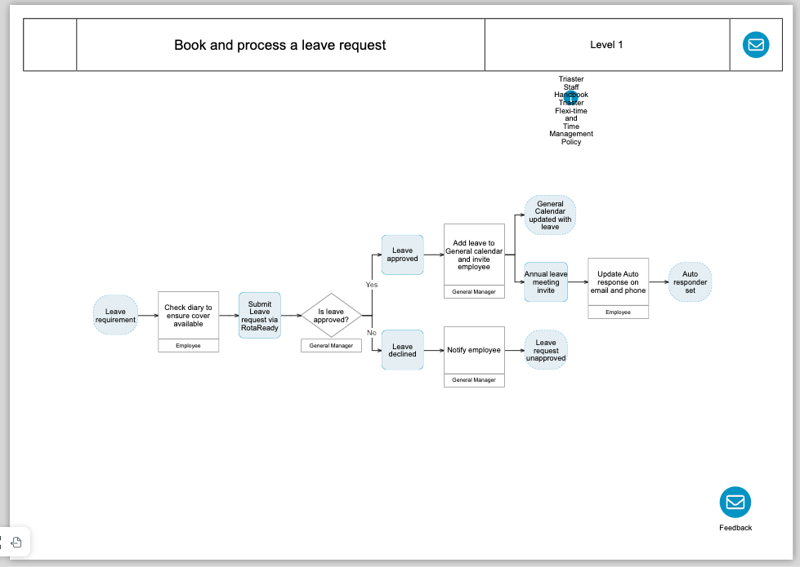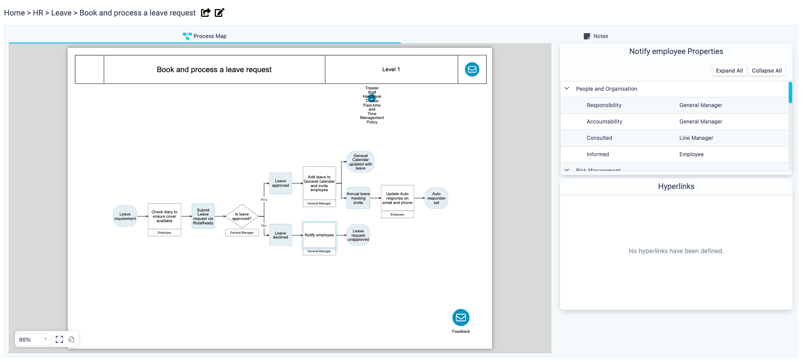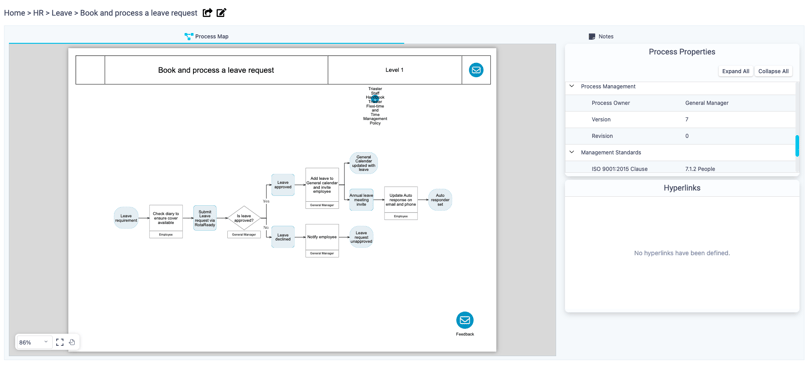A RACI Matrix is a really useful tool used by many organisations, especially those that want to prevent process failure, ensure compliance, identify accountability and responsibility and manage their processes so that nothing is overlooked. This article explores what a RACI Matrix is and why capturing RACI metrics is so important, but also why you need more than just a RACI Matrix to deliver business process improvement.
Contents:
- What is a RACI Matrix?
- What does RACI Mean?
- Why is a RACI Matrix Template Important?
- A RACI Matrix Analysis Can be Used to...
- The RACI Six Sigma Approach
- Using a RACI tool Within a BPM System
- RACI and BPM Systems
What is a RACI Matrix?
A RACI Matrix is a visual representation of all the key stakeholders involved in a process and their particular role within that process. The letter assigned (R, A, C or I) determines the level of responsibility specific roles have within the process and what level of engagement each role has in any future decisions made with regard to that process. A RACI Matrix template should contain:
- The process
- The position involved with that process
- The number of people that are involved with a specific business process
- What their role is in the process - Responsible? Accountable? Consulted? Informed?

For a process mapping tool which enables you to easily capture RACI whilst process mapping and display the information within your process maps, try Process Library.
What Does RACI Mean?
- Responsible - the person who performs the task (does the job)
- Accountable - the person who is accountable for the process success or failure and usually has the final sign off on any process change (the buck stops with them)
- Consulted - the person who needs to collaborate and provide feedback on the process and any future change (needs to have a say)
- Informed - the person that needs to be kept in the loop of any decision or action relating to the process (need to be told something is happening)
Why is a RACI Matrix Template Important?
A RACI Matrix template is important because it holds people accountable for processes and ensures that all those that should be involved with any process change or decision are properly involved.
Most notably, a RACI Matrix is important for business process improvement, as capturing the RACI roles ensures that not only is it clear exactly who is responsible and who is accountable for each process, but also ensures that everyone with an interest in the process is involved (as appropriate) in discussions about it and process changes are properly communicated to all the relevant parties.
Identifying all the key stakeholders involved within a process, is a huge advantage because it makes it easy to capture an accurate map of the current process and implement a successful business process improvement project.
A RACI Matrix Analysis Can be Used to...
- Find overworked employees who are responsible or accountable for too many processes
- Organise processes so that nothing is overlooked and every process has ownership - resulting in far less chance of a failure
- Support oversight and quality control
- Ensure appropriate compliance functions are in place
- Assign projects effectively with process owners, process enforcers and process collaborators all understanding their roles
- Document and visually capture the roles and responsibilities which can later be connected to the specific process steps that are being carried out
- Assign new employees to processes
- Get new employees up to speed quickly by ensuring that when your processes have been captured and assigned to the appropriate job title, the incoming employee can pick up where the outgoing employee left off
The RACI Six Sigma Approach
RACI and Six Sigma work well together because the Six Sigma methodology of DMAIC (Define-Measure-Analyse-Improve-Control) works best when process roles are identified and carried out to ensure improvement.
DMAIC is a methodology that supports continuous business improvement by encouraging process stakeholders to:
- Define the process
- Measure the process effectiveness
- Analyse improvement opportunities
- Improve the process
- Control the implementation and maintenance of the improvement
If DMAIC is the approach you are using to improve your organisation, then RACI is how you ensure that methodology is implemented and applied correctly by your employees.
Changing culture is hard, but taking a RACI Six Sigma approach ensures that you can identify:
- Where the process is breaking down
- Why the process is breaking down
- Who is responsible for the process breaking down
- Who is accountable for the breakdown and engaging the process stakeholders for improvement discussions
- Who needs to be involved in any improvement discussion
- How you can improve the process after analysing the key data
- Who is responsible for seeing that any change is implemented and controlled correctly.
The RACI Six Sigma approach (RACI and DMAIC) provides the method for successful continuous improvement and implementing both, will tighten up your organisation's processes and ensure that your entire team is organised and structured as effectively as possible.
However, even with a business process improvement method established, you will need a Business Process Management (BPM) system to help you capture the RACI information and implement the DMAIC steps, and also to structure and present the information in a way that it is useful and useable to all stakeholders.
Using a RACI tool Within a BPM System
I am using the Triaster Process Library to demonstrate how much easier a RACI Matrix template can be utilised and controlled within a BPM system.
In the process map below, you can see how you can display who is responsible for carrying out an activity beneath the shape:

By clicking on each activity shape a Properties file is displayed in a box on the right of the screen (with RACI displayed on the left and the job roles assigned on the right) which you can see in the image below:

It is best practice to record Responsibility, Accountability, Consulted and Informed on all of the business Activities. Sometimes, in the interest of speed, customers only record Responsibility and Accountability to start with, but it is very important to ensure Consulted and Informed are captured. In fact it is essential for the correct application of DMAIC, and critical for compliance and quality. For more on this please read Terry Giles' article: RACI Matrix: Why Consulted and Informed are Important too
If you would like take a tour of our Process Library and find out how these tools work please request a Process Library Demo now.
Recording the RACI Matrix behind Activities enables everyone looking at the process to understand exactly who should be doing what and who is ultimately responsible for actions to be carried out.
We would always recommend using job roles rather than recording specific employees names in the RACI Matrix, so that when individuals change roles, you won't have to update the information.
A good BPM System also records process management data including the Process Owner, Business Function, Author, Approvers, Reviewers, Version, Revision, Change Data and Change Description.
RACI and BPM Systems
So in conclusion, a RACI Matrix is a great tool to use, but used on its own, it has limitations. Business Process Improvement projects are best served with a complimentary methodology like Six Sigma and a BPM system, that both improvement specialists and those people performing the processes - doing their jobs on a day-to day basis - find useful.
There are many systems out there, some cheaper than others; the important thing is to be clear exactly what your specific BPM objectives are before you choose one.
If you would like to discuss your specific BPM requirements with one of Triaster's knowledgeable Business Improvement team, please get in touch. Either through one of our standard contact methods or via the button below:
Related Articles:
RACI Matrix: Why Consulted and Informed are Important too
Reconciling Sarbanes-Oxley Compliance and Process Improvement
Process vs Procedure: How to Document Processes and Procedures
Related White Papers:
The A-Z Guide to Business Process Management
The Business Improvement E-book
This is an updated and refreshed edition of an article originally written in 2018.
Written by Emma Harris
Emma was Operations Director for Triaster for nearly 20 years, during which time as well as learning and perfecting her BPM and process improvement skills, she honed her inbound marketing expertise. She now runs D2e - Designed to engage - which designs and develops bespoke, engaging, HubSpot CMS websites, that help your entire company to grow and scale. She is delighted to still be delivering Triaster's marketing, whilst also helping other companies turn their websites into their hardest working asset.



